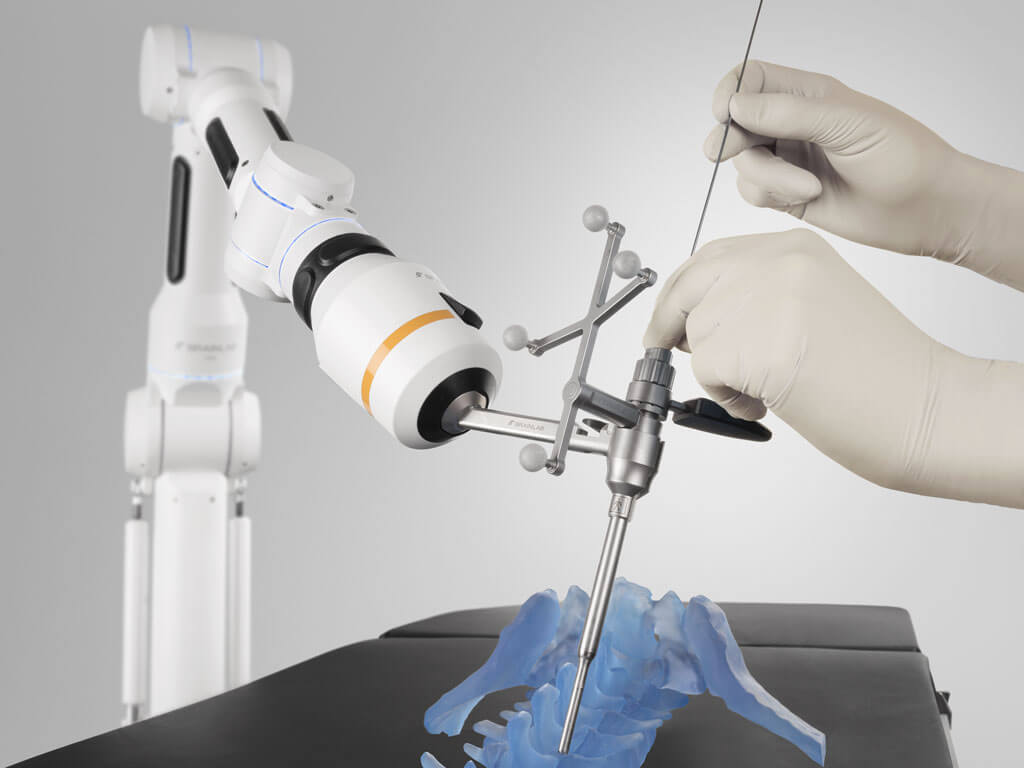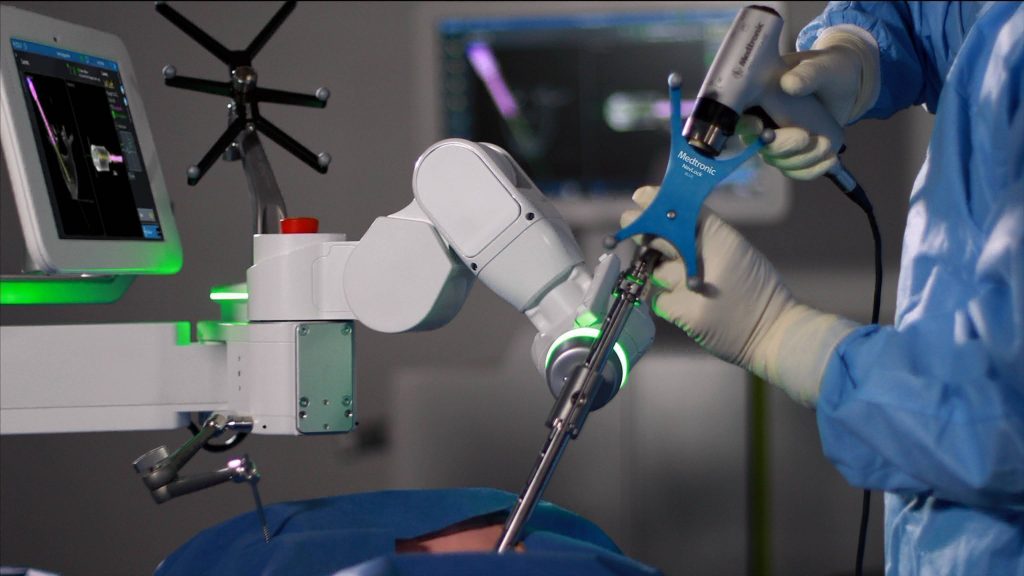Navigation Spine Surgery
What is Robotic Spine Surgery?
Robotic spine surgery is a form of Minimally Invasive Spine Surgery. To operate using the Robotic system, the surgeon makes tiny incisions in your body and inserts miniaturized instruments and a high-definition three-dimensional camera. With the help of a monitor & console, the surgeon verifies & manipulates those instruments to perform the operation.
The surgeon uses diagnostic images to determine the size and placement of implants and creates a patient-specific plan based on the individual anatomy. This is used to guide the rigid robotic arm to a specific region of the spine, similar to a planned route or pathway on a GPS. The surgeon uses this pathway or route to accurately place the implants using instruments. Throughout the procedure, the surgical instruments and implants are continuously displayed on the screen for the surgeon and staff to monitor. This display allows the surgeon to view live feedback during the entire procedure for more precise implant placement.

What is Navigation Guided Spine Surgery?
Image-guided navigation during spinal surgery is an invaluable assistant to MIS surgeons as it allows for a larger area of visualization of bony and so issues through a smaller area of surgical dissection. Utilization of navigation has been shown to improve the accuracy of placement of pedicle screws. Spine navigation was initially used to improve the accuracy of pedicle screw placement. However, over the years, its use has extended into minimally invasive surgical techniques, cervical spine surgery, revision surgery, and spine tumor surgery.
What is Neuromonitoring in Spine Surgery?
Spinal surgery involves a wide spectrum of procedures during which the spinal cord & nerve roots are frequently placed at risk of injury. Neuromonitoring provides an opportunity to assess the functional integrity of susceptible neural elements during surgery. Intraoperative neuromonitoring (IONM) protects patients by continuously monitoring the central & peripheral nervous systems (the brain, spinal cord, and nerves) which are at risk during surgery. Depending on the procedure, a variety of tests can be used to measure the intactness/ integrity/ continuity of the nervous system function.
What are the advantages of using Robo-navigation and Neuromonitoring in spine surgery?
Robotic systems in spine surgery enhance safety in spine surgery 3-fold: (1) increased accuracy of pedicle screw placement vs conventional freehand techniques, (2) minimally invasive applications (small incision, minimal retraction, dissection, bleeding, and infection), and lastly (3) decreased radiation.
Navigation has enhanced precision of implant placement to as close to perfect as possible, reducing implant-related errors & adverse sequelae. The overall benefits include accurate and safe instrumentation, minimal radiation exposure to the surgical team, reduction of surgeon fatigue, and enhanced patient outcomes.
Neuromonitoring recognizes functional changes in the spinal cord, usually in the reversible phase, when the prompt response of “Spot, Stop & Swap” prevents a neurological complication.
Is Robotic or Navigated spine surgery required for simple minimally invasive /decompression or slip disc surgery?
No – Routine Slip disc surgery, Spinal stenosis surgery, Spinal decompression surgery do not need neuromonitoring, navigation, or robotic assistance. Since the cost of surgery may increase multifold without enhancing the safety of these routine surgeries they are not routinely
recommended in every spine surgery.
PHOTO OF NAVIGATION / ROBOTIC SURGERY
Contact
FILL IN THE FORM
FOR APPOINTMENT
For Emergency
We Are Open Always 24 hrs | 365 Days
Call: 8657500555 | 8657500666

